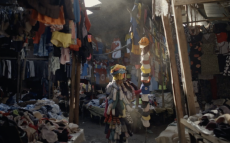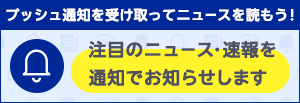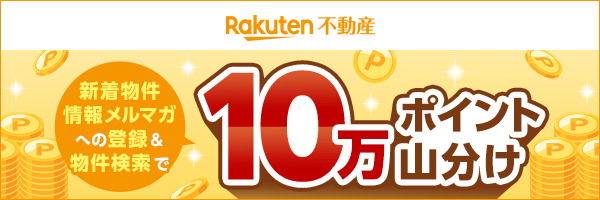.nl Issue:善行とされる「寄付」の裏面を、VRなどの先端技術を使い未来的なドキュメンタリーに落とし込んだTeddy Cherim監督/ Interview with Teddy Cherim, director of ‘Goodwill Dumping’
NeoL / 2020年3月5日 17時0分
.nl Issue:善行とされる「寄付」の裏面を、VRなどの先端技術を使い未来的なドキュメンタリーに落とし込んだTeddy Cherim監督/ Interview with Teddy Cherim, director of ‘Goodwill Dumping’
オランダのクリエティヴ業界を盛り上げているアーティストたちを取り上げる「.nl Issue」。近年、多くの国が国境を閉鎖しナショナリズムが高まり、世界共通の言語でもあるアートを通して団結することが以前よりも重要となってきている。NeoLでは、現在の状況と予測不可能な未来のために、議論ができる空間を様々な形で人々に提供するアーティストやアクティビストへのインタビューに取り組み続けている。本特集では、限界に挑み続け、フロントランナーとして走るオランダに在住するアーティストを紹介し、国の魅力についてはもちろん、今現在の環境、社会構成、政治などの問題を乗り越えるために必要とされる緊急性と行動力を喚起したい。
様々なアーテイストのMV、ブランドのCMを手掛け、VRなどの先端技術を使い革新的なアイデアを映画に取り入れることで有名な監督Teddy Cherim。彼はアムステルダムで監督として活躍する以前はアフリカの現地テレビ局で働いていた。その当時、西洋では善行だと思われている「寄付」の裏面に気づき、この現実を未来的に描いているのが彼の最新ドキュメンタリー『Goodwill Dumping』。他の惑星を訪ねたかのような世界観に入り込み、現在話題になっている環境問題について詳しく知りたい人には見逃せない作品だ。
(→ in English)
――現在の社会情勢の中、このトピックについてショートフィルムを制作したいと思ったきっかけを教えてください。
Teddy「きっかけはいくつかあります。数年前ケニアで暮らしていた頃、オランダの郵便局やサッカーチームのロゴが書かれたTシャツを着ている人を頻繁に見かけて、ずっと不思議に思ってたんです。すると、現地で親しくなった仕立て屋の方が先進国から寄付されてくる服のせいで客数が減っているという不満を聞き、『寄付すること』の裏側に気づきました。さらに、多くの人にとって「寄付」という行為がドネーションボックスに服を落とした瞬間に終わるという答えにたどり着けたのです。そのあと、Lisa Konnoという才能あるデザイナーに出会い、方向性がかなり決まりました。彼女はファッション業界の裏面を見てきてたので、僕とは違う視線を持っていて、制作プロセスにいい刺激を与えてくれたんです。映画に登場する寄付された服でできたモンスターは、Lisaのアイデアでもあるのですが、資本主義によって作られたファッション業界の比喩として使われています」

――このモンスターですが、どこかの芸術大学の卒業制作として見かけそうな作品なので寄付された服で作られているとは思いませんでした。ドキュメンタリー中に流れるBGMも未来的な空間を創りあげている感じがしましたが、このような要素を加えてわざと異次元にいるような雰囲気を描いた理由は何ですか?
Teddy「 僕は前からSF映画を作りかったので、その欲が滲み出てしまったのかもしれません(笑)。音楽は兄が制作したもので、僕の音楽の好みを熟知しているのでいつも彼に任せています。正直、初めてアフリカのスラムを訪ね大量に寄付された服を見た時には衝撃を受けましたが、同時に別の惑星に来ているかのような感覚になりました。モンスターは地球にはいない生物を意味するので、それを登場させることで異次元な世界観を作れるのではないかと思ったんです。とはいえ、寄付された服には、安くて質が良いという点で長所もあります。なので、恐ろしいモンスターではなく、親しみやすいキャラクターになるようにしました」
――最後のシーンでは、音楽が急に止まり、ドネーションボックスのショットが数秒映され、ドキュメンタリーが終わります。なぜアフリカではなくヨーロッパに戻ってからドキュメンタリーを終わらせたのですか?
Teddy「それも異次元な雰囲気を出すためでした。ヨーロッパに戻ったと同時に、現実に戻った感覚を思い起こさせ、『今見たことは本当に起こっているのか?』と観客が自らに問いかけをして欲しかったんです。ファッション業界だけではなく、善行の裏側なんて沢山の例があげられますよね。例えば、アフリカやインドで大きな問題となっている自然保護のトピックであれば、ある場所を人間が自然保護すると、保護される森林や自然体に何年も住んでいた難民が追い出されてしまうんです。いつかはこの問題についてのドキュメンタリーも制作したいと思っています」
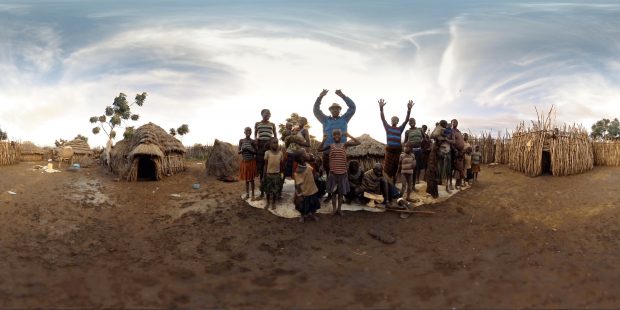
――『Goodwill dumping』を制作する前はナイロビで現地のテレビ局のクリエイティブダイレクターとして暮らしていたそうですね。なぜ引っ越したいと思ったのか、再びアムステルダムに戻ってきた理由を教えていただけますか?
Teddy「2013年のシリア内戦が起こっている当時、IRC(機関名)国際救援委員会に難民危機についてのビデオを制作してほしいと頼まれました。そして、レバノンとシリアの2か国の境界に位置する難民キャンプで『Solar for Syria』というキャンペーン動画の一部を撮影をしました。その際に、人々の悲惨な状況を見た後に、キャンペーンの資金が電気を発動するソーラー電気4万個と携帯の充電器を買うために使われ、全て僕が撮影していた場所に送られたことを知り、感銘を受けました。初めて自分の映画が実際に世界に及ぼす影響を体感することができたのです。それから、映像が作れて、なおかつキャリアアップができるような場所を探し始めました。そして、最終的にオランダにたどり着いたのです。少し話が逸れますが、実は16歳の時に、『スパンク』という雑誌で少し働いてて」
――『スパンク』はどんな雑誌だったのですか?
Teddy: オランダを拠点とした『VICE』みたいなものでした。ライターはみんな15−18歳の子供で、面白い記事は新聞に掲載されたので意外とちゃんとした真面目な仕事でしたね。それが僕にとって最初のクリエイティヴな仕事で、ストーリーをどう伝えれば面白く見せられるのか学べた時期でもありました。アムステルダムに戻ってきた理由は、お金の問題です。アフリカだと、現地にいるカメラマンやスタッフの元の人数が少ない分、アムスで同じレベルのスタッフを雇うよりお金がかかるのです。でも、現地で多くのコネクションを築けたし、『Goodwill Dumping』 はケニアに住んでいなければ制作出来なかったプロジェクトなので、貴重な経験ができたと思います」
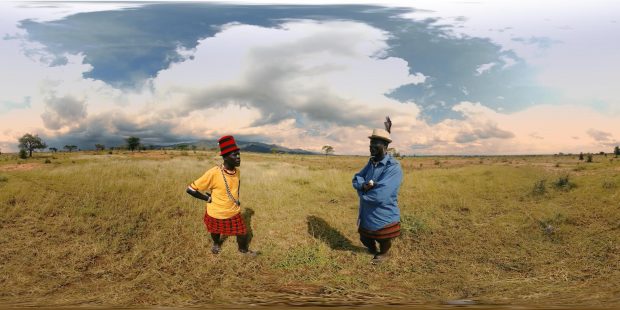
――『Meet the soldier』というプロジェクト兼ドキュメンタリーでは、ライバル心の高い部族リーダーの2人をVRを通して和解させました。VRとドキュメンタリーのおかげで長年続かれていた内紛を終了させることができたと聞いた時、どのように受け止めましたか?
Teddy「私たちは、ただ部族リーダーたちにVRという手段を提供しただけで、和解ができた理由は完全に彼ら自身です。VRを使った理由は、部屋で2人きりで話し合いをしろと言われても、お互い冷静にはなれないと思います。だけど、VRは物理的に遠く離れていても、その人が近くにいるように感じられることができるので、これを活用すれば和解出来るのではないかと考えたのです。実は、僕のオランダ側の祖父母はユダヤ系なので第二次大戦時ナチスから逃げるために母国を後にせねばなりませんでした。シリアを訪れたときに、自分は人々を楽しませることで、彼らを助けなければならないと感じた理由はそこからきているのかもしれません。なんだか偉そうに聞こえちゃいますね(笑)。僕、今度KFCのCM制作をするのでなんとも言えない立場でもありますが(笑)」
――KFCのような大物ブランドのCVなどを制作された経験は、ご自身のプロジェクトにどのような影響を及ぼしますか?
Teddy「商業的なものはギャラがかなりいいので助かります(笑)。そこで稼いだ分を2、3ヶ月間に渡る自分のプロジェクト費用や生活費にあてています。CM用のプロジェクトでは予算が十分にあるので、ヘリコプターやクレーン車をはちゃめちゃに使えたり、小道具もたくさん使えるので楽しくもありますね。KFCの制作予定のCMは人が団結する大切さを伝えるものなので、メッセージ性という点では自分の得意分野を生かせそうです」
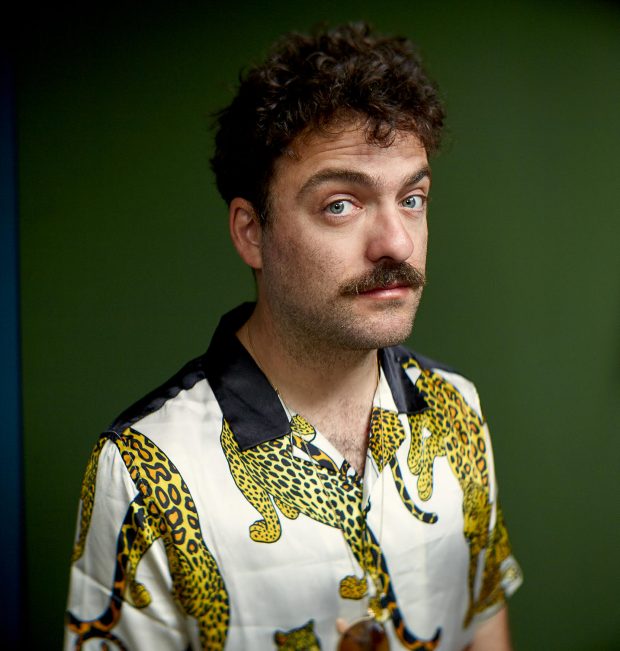
――これからも、ストーリーを伝える手段として主に映像を使っていきますか?
Teddy「 映像は、『美しい』だけで終わってしまう場合があるので、これからは言葉や相互作用できるような媒体も同時に使っていきたいと考えています」
――最後に、学術的にもクリエイティヴ業界は1箇所に集中すると言われていますが、アムステルダムが世界のアーティストを魅惑させる理由は何だと思いますか。
Teddy「オランダ人がみんな英語が流暢で国際人にとてもオープンだからではないでしょうか。歴史的に見ても、まだ自国では認めれていなかった科学者や芸術家がアムステルダムに来て、本を刊行できるような環境も整っていたようです。今はハッパも合法なのでアーティストのクリエティビティを促すために使われているかもしれませんね(笑)。あと、映像業界はロンドンやニューヨーク、ハリウッドの大都市などに固まることが多いと思います」
text Ayana Waki
Teddy Cherim
Teddy studied at the Metropolitan Film School in London, after which he returned to Amsterdam to make the feature film Sterke Verhalen, which he wrote and directed together with Kees van Nieuwkerk. In 2014 Teddy moved to Nairobi to become Creative Director at a regional media conglomerate. Since 2016, Teddy has been back in Amsterdam from where he has been working as a freelance writer, director and creative, shooting all over the world.
http://www.teddycherim.com/mainframe
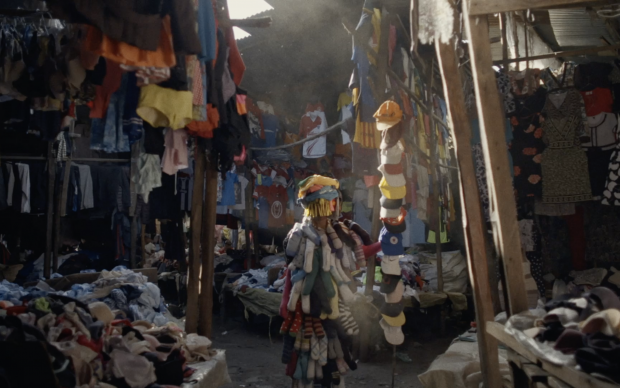
Good intentions often come with consequences. According to director Teddy Cherim, the same applies for clothing donations. It was when Teddy was working as a creative director in Kenya that he realized that the country was overflowing with excessive amounts of donated clothing. After pairing up with designer Lisa Konno, he decided to develop a short film to address this problem and call it Goodwill dumping. The short is unlike other documentaries and geared towards a more SF feeling, as the viewer is dragged down a rabbit hole only to end up in an otherworldly dimension invaded by ‘creatures’ representing what a double ended industry mankind has created. Sadly this isn’t life on another planet but an accurate portrayal of the reality we are unaware of. I talked with Teddy to get a clearer sense of how the film came about.
-Goodwill dumping is a short film documenting the real reality behind where our donated clothing ends up. What ignited this sense of urgency to create this film during the current social climate?
Teddy: I think it was a few things at the same time. Number one, I was living and working in Kenya and kept on meeting people wearing Dutch T-shirts, from the postal delivery man shirts to football shirts from ten years ago and I was always wondering how weird that was. How it was kind of funny as well. Then I started to realize by meeting some tailors that were really complaining about losing influx because of all of this donated clothing. That’s when I started realizing that this was the dark side of charity. Consequences of not well thought out charity or asking myself ‘is it even charity?’.That let me down this rabbit hole to find out that the charity ends the moment you drop it in the bin. After that it’s a multi million euro industry which makes no sense. But it is also an excuse for us to buy more crap if we can donate stuff we don’t wear for the better cause. This dark side of good intentions is what intrigues me. So that’s how I got into this story and then I met Lisa who had seen this from a designer’s perspective with recycled fabrics. We were actually talking about making a science fiction film together. I wanted to make a SF film with these crazy themes and she wanted to make costumes out of donated clothing and then there was suddenly a perfect story of something I was aware of but not really sure how to approach. Her costumes were a good metaphor for this monster industry that we have created.

-The costumes are creations that we could see at a graduation show in an arts academy. It is amazing that they were created from discarded fabrics. The music for the film also gives it a futuristic feel. What made you want to create a film incorporating such elements?
Teddy: I think it was still me wanting to make sci-fiction films (laughs). The music is actually made by my brother for all of my films. He always knows what kind of songs I like so it was a bit futuristic but it feels like you are entering this new world with all of this crazy amounts of clothing in slums in Africa. It felt like sci-fi. Those markets feel as if it's from another planet in star wars. That is sort of the vibe I got there, its otherworldly already. For me to show the monsters as otherworldly sci-fi animals. We are not meant to say monsters because it makes them seem bad but they are a metaphor for what kind of 'being' this industry is. It is not all bad. There are people in Kenya who would lose their jobs if there was no more donated clothing because it is the cheapest relatively high in quality clothing you can get there if you don’t have any money. So they are friendly monsters in it as well.
-For the last shot, the music abruptly stops and the viewer is back into the western world as if nothing had happened. Why did you want to end the film in the western world?
Teddy: You start the film at those donation bins and you look inside into this world. At the end you close it because you feel like you can’t deal with everything that you just saw. You are back in the rain in a random neighborhood in the Netherlands. That was sort of the idea of snapping back to reality or asking yourself ‘is this even reality?’ I would like to do more projects like this. There are so many more industries like this one where the side effects of them are so unknown. If you would make a similar film about an iphone, it would be as terrifying I assume. There are so many examples but my favorite is the one about refugees that have to move out due to nature conservation. When humans decide that this land should be conserved, that means all of the guys who have been living there for thousands of years have to move out because now it is a nature reserved place and humans are not a part of nature. Places in India and Africa when suddenly someone says ‘sorry this jungle is now nature reserved so all of you people living here, get out.’ And it’s weird, because everyone sort of supports conserving nature but in some parts of the world it's not so simple. For so many years, it has been handled as if it is that simple. It’s such a downer though. But that is also why projects like these are very difficult to finance. Because people are like ‘That is horrible but no one wants to watch a film about it’.

-Before the making of goodwill dumping, you lived in Nairobi, Kenya and was a creative director there. What initiated that move and what made you decide to come back to Amsterdam?
Teddy: The simplest story is, I was working here and making music videos, commercials and fiction stories. In 2013 during the Syrian War, the international rescue committee asked me to make a video about the refugee crisis. So we were filming on the border of Lebanon and Syria in camps. It was hectic and chaotic but a part of that campaign -solar for syria- was our video. When I came back after having seen all of these people in pain and despair, I was impressed to notice how this campaign generated money to power 40 thousand solar lights and phone chargers went to exactly where I had filmed. So for the first time I saw the real world impact on my filmmaking. Film for not just enjoyment but impact. I started to look for jobs in places where I could start filming and earn my stripes. But as a 16 year old, I used to write for a magazine called spunk in the Netherlands.
-What is it ?
Teddy: It was like vice before vice but only in Holland. It was written by 15-18 year olds. We were all smoking weed and writing articles and the best ones would get published to be in the newspaper so it was quite serious and it was my first creative job to write but also to see things as concepts and stories in a sort of way. Then I went to film school and the guy who founded that magazine went to set up a film school in Tanzania. I remember thinking that when I am a 'professional filmmaker' I will go and see if I can teach there. When I was looking for a job, I also reached out to him and checked if he needed anybody. Two months later, I moved. I had never lived there before but I worked there for two years and ever since I have been going back and forth.
Teddy: The reason I came back is, although it was a good adventure there, I missed working at a certain level of craft which was a little difficult to do. They have a really good crew there but they are so rare that they are almost more expensive than here. Budgets are lower, so I thought I have the experience and the connections. I love it here so I will be back but I have to make my projects in the Netherlands like 'Goodwill Dumping' which I never would have been able to make if I had not lived there.

-Your other feature film ‘Meet the soldier’ had a mission of reconnecting a relationship between two tribal leaders through the use of VR. After hearing you had successfully accomplished that mission, how did it make you feel?
Teddy: I mean we were with a team and in the end, it was they themselves that decided to see each other. We just gave them the ‘means’ to listen to one another. These guys, if you put them in a room they would probably also talk a bit but then they wouldn’t be able to tell personal and angry stories that had happened to them without the other being offended. They need to be alone for that. Virtual Reality is an amazing platform that brings people together. We kind of forced them but it was very special. I came back from another shoot that was in the same region so I met up with one of them again. He became sort of a peace ambassador of that region and he is now the guy that everyone listens to. My grandparents from the Netherlands are Jewish so they had to flee during WW2 for the Germans so I think this is an underlying reason as to why when I went to Seria for the first time I had a triggering feeling to use the powers that I have to help as well as to entertain. Fuck that sounds, really high and mighty. I’m making a KFC commercial next so I am karma neutral (laughs).
-Speaking of other projects, How does making commercials for brands help you in terms of your self initiated projects?
Teddy: Well they pay me. They pay me so much better than my self initiated projects that if I don’t, I wouldn't have the freedom to do my projects. You need to find a balance but one commercial gives me two months of time to develop a script and a story, which takes so much more time. If I don’t do the commercial, I have to do something else. Also telling a story in a super concise way is nice. For commercials especially when you have a big budget you can do crazy stuff with a helicopter and a crane, use props you usually wouldn’t be able to afford for a documentary. Actually this new KFC commercial is about bringing people together. It is still for KFC but the message is something I can support so that is nice.

-Spatial dynamics prove that creative industries tend to cluster. What do you think makes Amsterdam a hub for creativity?
Teddy: Film and creative industries are usually focused in big cities such as London or in the States but Dutch people speak amazing English and open for internationals to come. Maybe historically, Amsterdam has especially for the printing press been inviting artists and scientists who weren't allowed to speak their minds come here to publish their books. Times have changed but it is still comfortable to live here and you can smoke weed. Could be another element important to spark creativity.
text Ayana Waki
Teddy Cherim
Teddy studied at the Metropolitan Film School in London, after which he returned to Amsterdam to make the feature film Sterke Verhalen, which he wrote and directed together with Kees van Nieuwkerk. In 2014 Teddy moved to Nairobi to become Creative Director at a regional media conglomerate. Since 2016, Teddy has been back in Amsterdam from where he has been working as a freelance writer, director and creative, shooting all over the world.
http://www.teddycherim.com/mainframe
関連記事のまとめはこちら
https://www.neol.jp/movie-2/
この記事に関連するニュース
-
「自分にとって何が大切なのかを知ることができた」Jamie xx “In Waves”インタビュー
NeoL / 2024年9月16日 17時0分
-
広報戦略ミス?...霞んでしまったメーガン妃とヘンリー王子のNetflix新番組「POLO」
ニューズウィーク日本版 / 2024年9月14日 10時10分
-
Message from Anna Umemiya: “I began treatment for breast cancer on July 31.”
OTONA SALONE / 2024年9月4日 16時30分
-
面接対策から日常会話まで、「日本語のオンラインプライベートレッスン」9月生・10月生の募集を開始!
PR TIMES / 2024年8月31日 10時40分
-
【ミスミ】機械部品調達のAIプラットフォーム「meviy」/ ハンドクレーン業界シェアNo.1のアイコクアルファがmeviyを採用
PR TIMES / 2024年8月30日 13時15分
ランキング
-
1年齢のわりに老けて見える人は「化粧水」を間違えている…潤うどころか肌をヨボヨボにする「危険成分」の名前
プレジデントオンライン / 2024年9月22日 17時15分
-
2ペーパードライバーの “迷惑運転行為”に、走行距離30万km超のゴールド免許所持者が怒りの告発
日刊SPA! / 2024年9月15日 15時52分
-
3現在使用しているエアコンのメーカーランキング! 2位「ダイキン」、1位は?
オールアバウト / 2024年9月22日 17時15分
-
4騒音や悪臭トラブル…やっかいな隣人への対処法。「役所に相談をしますよ」と直接交渉は危険、ひろゆきが考える“ズルい”言いまわし
日刊SPA! / 2024年9月22日 8時46分
-
5姿を消していたヒロミが旬芸人をしのぐ人気な訳 打ち切り「ジョンソン」の後釜番組のMCに座る
東洋経済オンライン / 2024年9月22日 11時0分
記事ミッション中・・・
記事にリアクションする
![]()
記事ミッション中・・・
記事にリアクションする

エラーが発生しました
ページを再読み込みして
ください



